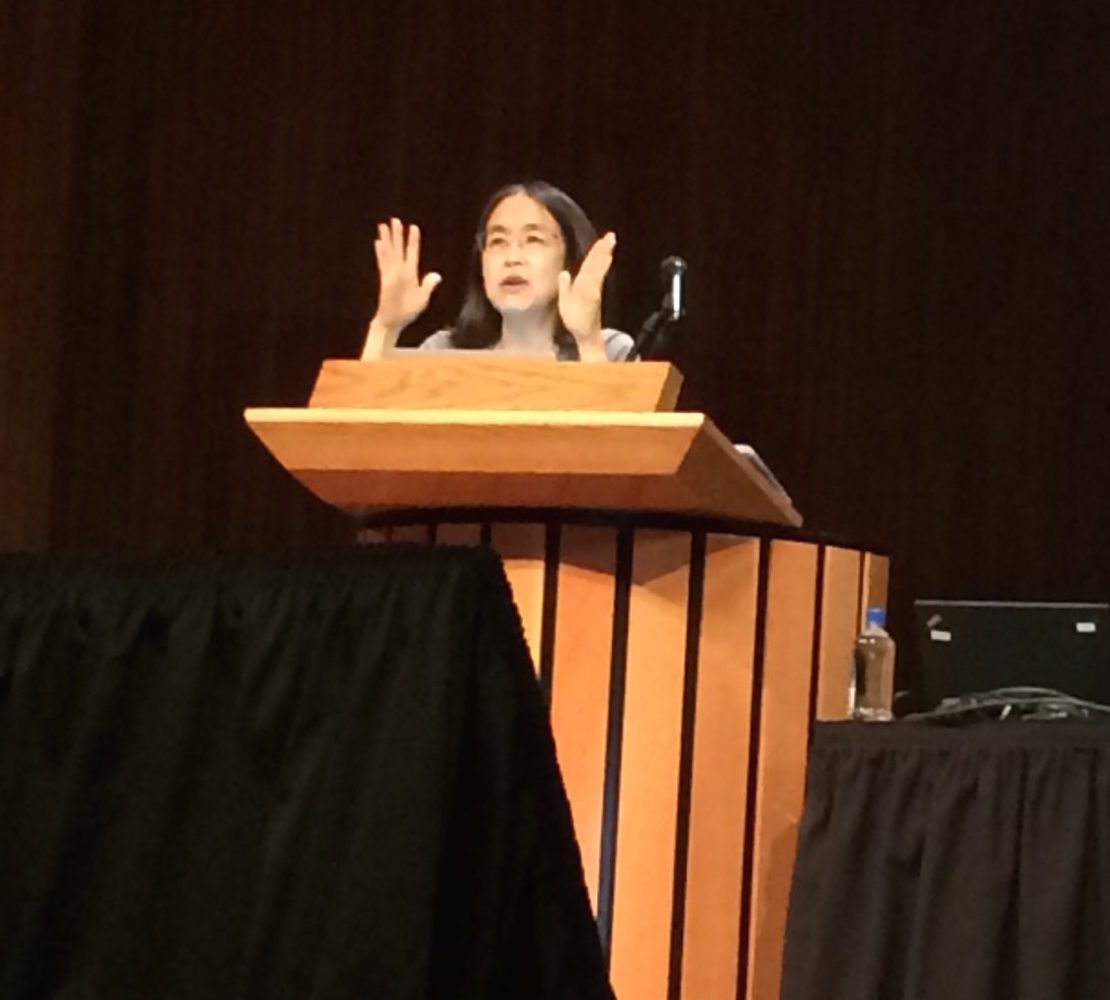
Guardians of the genome
Ting Wu explains her journey to discover the secrets of the cell’s surveillance system during her presentation to science writers at MIT. (Photo by Steph Guerra.)
Evolution—the change in heritable traits over successive generations—has long served as one of the central tenets of biology. But new research indicates much can be gained from studying regions of the genome that do not change. Termed “ultraconserved elements” or UCEs, these portions of the genome have remained unchanged for 300 to 500 million years, appearing in the same state across multiple animal species—from humans to dinosaurs to platypuses.
Their purpose has puzzled geneticists ever since a paper in Science first reported their existence in 2004. “I read it on the plane and I literally could not sit down, it was so shocking.” said Harvard geneticist Ting Wu during a presentation to science writers at CASW’s New Horizons in Science briefing Oct. 11 in Cambridge, Mass., part of the ScienceWriters2015 conference. “People were just left with no reason why these sequences should be so conserved.”
While the science in this field is still young, Wu believes that unlocking how these unchanging DNA elements work could allow scientists to harness this natural process for good. Further research could ultimately lead to new cancer therapies, defenses from the damaging effects of aging, and even methods to protect astronauts from harmful radiation in space.
According to the original 2004 paper, there are more than 400 such elements scattered across the genome that are 100 percent identical. No other part of the genome is exactly alike, making these regions striking. Common sense suggests that if an element is exactly identical across diverse species, it should have a crucial function. By this logic, UCEs are among the most important parts of the genome, Wu notes. Yet despite years of research, scientists have still not determined their purpose.
Sentinels of the genome?
One of many researchers attempting to solve this puzzle, Wu proposes that UCEs serve as sentinels of the genome, guarding certain regions from changing over time, while allowing others to evolve. She hypothesizes a system in which UCEs act to sense traumatic damage to the genome and upon recognition, signal those damaged cells to be eliminated.
A genome contains two copies of each genetic region, one from the father and one from the mother. When the paternal and maternal copies of UCEs pair, if even the tiniest portion is different, the cell will suffer consequences ranging from disease, infertility, or even death.
This surveillance system depends on the detection of unequal UCE pairing. If there is one copy of the UCE, this is too few, and the cell will not survive. Likewise, if there are three copies of the UCE, this is too many. Every cell must have two perfectly paired UCE copies to thrive, says Wu.
Wu’s group has found evidence across human populations to support this model. In healthy cells, UCEs are always found in perfectly identical pairs. Any deviation from this pattern disrupts the pairing of UCEs and, by Wu’s model, leads to elimination of that cell from the population.
However, the UCE surveillance system does not always work in this way. In cancer cells, UCEs are not always present in perfect pairs. Instead, some cancer cells possess multiple UCE copies or not enough. For some reason, the process of cell elimination does not happen in this cell type. Wu hypothesizes that failures of the surveillance system may lead to cancer-promoting changes in the genome.
Ultimately, if researchers can untangle how the surveillance system works, she believes they could harness it as a weapon to protect the genome before cancer happens. But she acknowledges this will take time. “There are a lot of ifs along the way,” she said in an interview after the presentation, “but I do feel at this point we really need to try.”
Working at the edge of seeing, and understanding
Already, her lab is making significant progress. Despite the long years working on UCEs, Wu had never seen these regions with her own eyes until very recently. Constraints such as high cost and lack of microscope resolution made seeing small regions of the genome impossible. In order to study UCEs further, Wu needed a reliable method to see them—so her lab invented one. This new technique, called Oligopaints, has allowed Wu to finally view small regions of DNA at high resolution.
“I had tears in my eyes when I saw these images,” she says.
With these new tools in hand, Wu and her group work tirelessly to untangle this puzzle. The next steps involve designing experiments to create cells that are defective in the surveillance system. By comparing these defective cells to normal cells, she hopes to figure out exactly how this phenomenon works.
Despite the uncertainty within this field, Wu’s unbridled enthusiasm shines through. “I like being on that edge, and I have a lab that is very enriched for people who like to be on that edge,” she said during the interview. “So when you like being there, even though you know it’s risky, it’s not so difficult.”